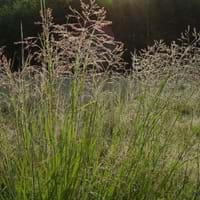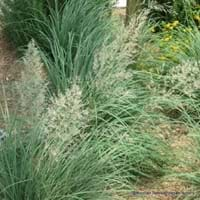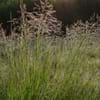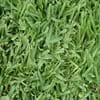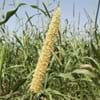Life Span
Perennial
Perennial
Origin
North America, Canada, Mexico, China
North America, United States, Southwestern United States, Texas, Mexico
Types
Not available
Foxtail muhly, Devils Canyon muhly, alkali muhly
Habitat
All sorts of environments
High elevation, Hillside, Slopes
USDA Hardiness Zone
5-9
7-10
AHS Heat Zone
9 - 1
12 - 7
Sunset Zone
1a, 1b, 2a, 2b, 3a, 3b, 4, 5, 6, 7, 8, 9, 10, 11, 14, 15, 16, 17, 18, 19, 20, 21, 22, 23
Not Available
Habit
Upright/Erect
Clump-Forming
Flower Color
Orange, Purple
Pink, Purple, White
Flower Color Modifier
Bicolor
Bicolor
Fruit Color
Brown, Light brown
Brown, White
Leaf Color in Spring
Blue Green, Steel Blue
Light Green, Blue Green
Leaf Color in Summer
Light Green
Light Green
Leaf Color in Fall
Blue Green, Steel Blue
Blue Green, Gray Green
Leaf Color in Winter
Tan, Sandy Brown
Blue Green, Gray Green, Tan
Leaf Shape
Orbicular
Grass like
Plant Season
Spring, Summer, Fall, Winter
Summer, Fall, Winter
Sunlight
Full Sun, Partial Sun
Full Sun, Partial Sun, Partial shade
Type of Soil
Clay, Loam, Sand
Clay, Loam, Sand
The pH of Soil
Acidic, Neutral, Alkaline
Acidic, Neutral
Soil Drainage
Average
Well drained
Bloom Time
Early Summer, Summer, Late Summer
Early Fall, Fall
Tolerances
Pollution, Drought, Soil Compaction
Drought
Where to Plant?
Container, Ground, Pot
Container, Ground, Pot
How to Plant?
Seedlings
Divison, Seedlings
Plant Maintenance
Medium
Medium
Watering Requirements
Average Water Needs
Needs less watering, Water every 3 weeks until the root ball is wet
In Summer
Lots of watering
Lots of watering
In Spring
Moderate
Moderate
In Winter
Average Water
Average Water
Soil pH
Acidic, Neutral, Alkaline
Acidic, Neutral
Soil Type
Clay, Loam, Sand
Clay, Loam, Sand
Soil Drainage Capacity
Average
Well drained
Sun Exposure
Full Sun, Partial Sun
Full Sun, Partial Sun, Partial shade
Pruning
Remove damaged leaves, Remove dead branches, Remove dead leaves
Grass Cuttting and pruning up to 5cm, Prune in early spring, Remove damaged leaves, Remove dead branches, Remove dead leaves
Fertilizers
All-Purpose Liquid Fertilizer
All-Purpose Liquid Fertilizer, EDTA iron
Pests and Diseases
Aphids, Rust, Spider mites
Red blotch
Plant Tolerance
Drought
Drought
Flower Petal Number
Single
Single
Foliage Texture
Fine
Fine
Foliage Sheen
Matte
Matte
Attracts
Birds
Bees, Butterflies
Aesthetic Uses
Not Available
Ground Cover
Beauty Benefits
Not Available
Not Available
Environmental Uses
Air purification, Biodegradable plastics production, Soil conservation
Air purification, soil erosion prevension on hill slopes, Wildlife
Medicinal Uses
Not Available
Not Available
Part of Plant Used
Not Available
Not Available
Other Uses
Animal Feed, Used to feed livestock
Used as Ornamental plant
Used As Indoor Plant
No
No
Used As Outdoor Plant
Yes
Yes
Garden Design
Edging, Feature Plant, Foundation, Mixed Border, Wildflower
Dried Flower/Everlasting, Foundation, Groundcover, Mixed Border, Rock Garden / Wall
Botanical Name
PANICUM virgatum 'Dallas Blues'
MUHLENBERGIA emersleyi
Common Name
Dallas Blues Switchgrass, Switchgrass
Bull Grass
In Hindi
Dallas Blues Grass
Bull Grass
In German
Dallas Blues Grass
Bull Grass
In French
Dallas Blues Grass
Bull Herbe
In Spanish
Dallas azules Hierba
Bull Hierba
In Greek
Dallas Blues Grass
Δελτίο Grass
In Portuguese
Dallas azuis da grama
touro grama
In Polish
Dallas Blues Grass
Bull Trawa
In Latin
Dallas Blues Grass
Bull Grass
Phylum
Magnoliophyta
Magnoliophyta
Class
Liliopsida
Liliopsida
Genus
Panicum
Muhlenbergia
Clade
Angiosperms, Commelinids, Monocots
Angiosperms, Commelinids, Monocots
Tribe
Not Available
Eragrostideae
Subfamily
Panicoideae
Chloridoideae
Season and Care of Dallas Blues Grass and Bull Grass
Season and care of Dallas Blues Grass and Bull Grass is important to know. While considering everything about Dallas Blues Grass and Bull Grass Care, growing season is an essential factor. Dallas Blues Grass season is Spring, Summer, Fall and Winter and Bull Grass season is Spring, Summer, Fall and Winter. The type of soil for Dallas Blues Grass is Clay, Loam, Sand and for Bull Grass is Clay, Loam, Sand while the PH of soil for Dallas Blues Grass is Acidic, Neutral, Alkaline and for Bull Grass is Acidic, Neutral.
Dallas Blues Grass and Bull Grass Physical Information
Dallas Blues Grass and Bull Grass physical information is very important for comparison. Dallas Blues Grass height is 120.00 cm and width 60.00 cm whereas Bull Grass height is 45.72 cm and width 60.00 cm. The color specification of Dallas Blues Grass and Bull Grass are as follows:
Dallas Blues Grass flower color: Orange and Purple
Dallas Blues Grass leaf color: Blue Green and Steel Blue
Bull Grass flower color: Pink, Purple and White
- Bull Grass leaf color: Light Green and Blue Green
Care of Dallas Blues Grass and Bull Grass
Care of Dallas Blues Grass and Bull Grass include pruning, fertilizers, watering etc. Dallas Blues Grass pruning is done Remove damaged leaves, Remove dead branches and Remove dead leaves and Bull Grass pruning is done Grass Cuttting and pruning up to 5cm, Prune in early spring, Remove damaged leaves, Remove dead branches and Remove dead leaves. In summer Dallas Blues Grass needs Lots of watering and in winter, it needs Average Water. Whereas, in summer Bull Grass needs Lots of watering and in winter, it needs Average Water.
